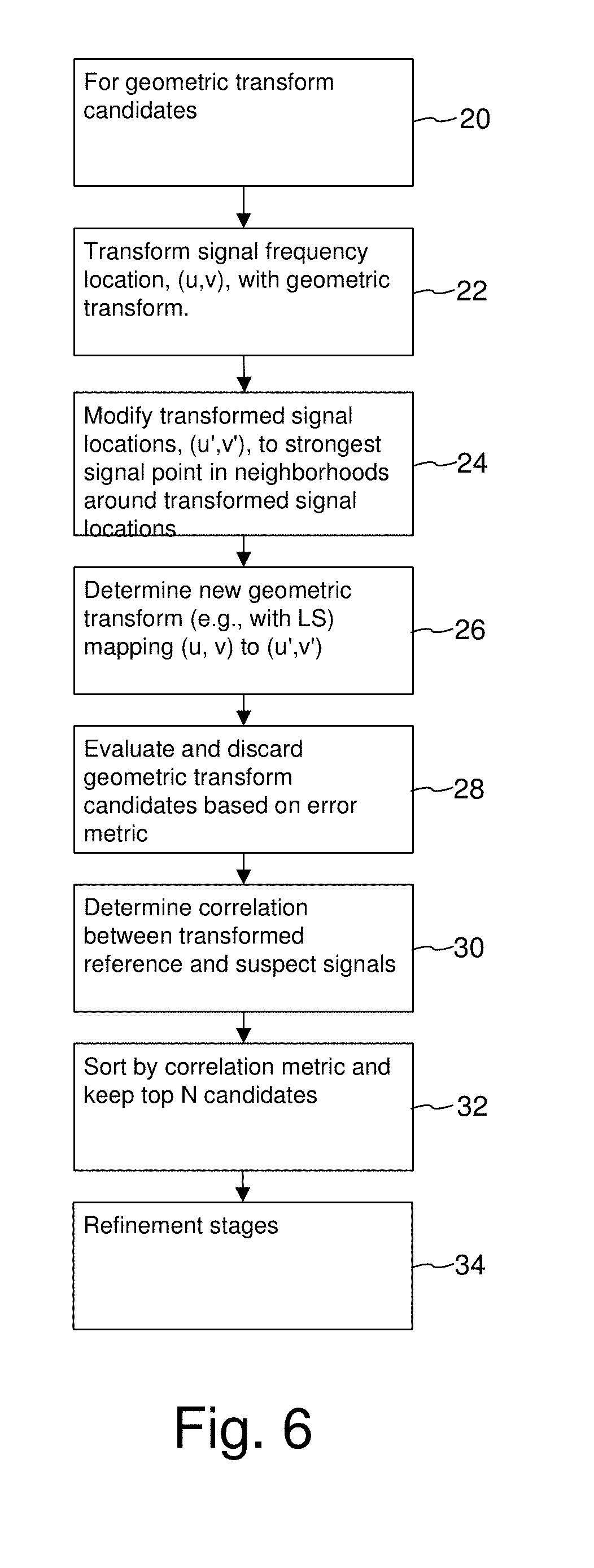Compensating for geometric distortion of images in constrained processing environments
a processing environment and compensation technology, applied in image enhancement, image analysis, instruments, etc., can solve the problems of wasting processing resources, many applications that require real time or low latency performance, and strict time and hardware resource constraints on the amount of time and hardware allocated, so as to achieve effective estimation, reduce processing costs, and reduce processing costs
- Summary
- Abstract
- Description
- Claims
- Application Information
AI Technical Summary
Benefits of technology
Problems solved by technology
Method used
Image
Examples
Embodiment Construction
[0047]We begin with a description of our method for determining a geometric transform of an image with reference to FIG. 6. We then describe various alternative implementation details. For additional background, we refer the reader to U.S. Pat. No. 9,182,778 and Provisional Application 62 / 199,710. The International Patent Application counterpart to 62 / 199,710, is WO 2017 / 011801, and both of these applications are hereby incorporated by reference.
[0048]FIG. 6 is a flow diagram illustrating a method for determining a geometric transform of an image. This method is used to find the geometric transform of a reference signal within a suspect image. The method seeks to determine the geometric transform parameters that best approximate the geometric transform between reference signal components and corresponding signal components located in the suspect image. It is not certain that the suspect image contains the reference signal. Moreover, even if it does, it is highly distorted due to geo...
PUM
 Login to View More
Login to View More Abstract
Description
Claims
Application Information
 Login to View More
Login to View More - R&D
- Intellectual Property
- Life Sciences
- Materials
- Tech Scout
- Unparalleled Data Quality
- Higher Quality Content
- 60% Fewer Hallucinations
Browse by: Latest US Patents, China's latest patents, Technical Efficacy Thesaurus, Application Domain, Technology Topic, Popular Technical Reports.
© 2025 PatSnap. All rights reserved.Legal|Privacy policy|Modern Slavery Act Transparency Statement|Sitemap|About US| Contact US: help@patsnap.com



